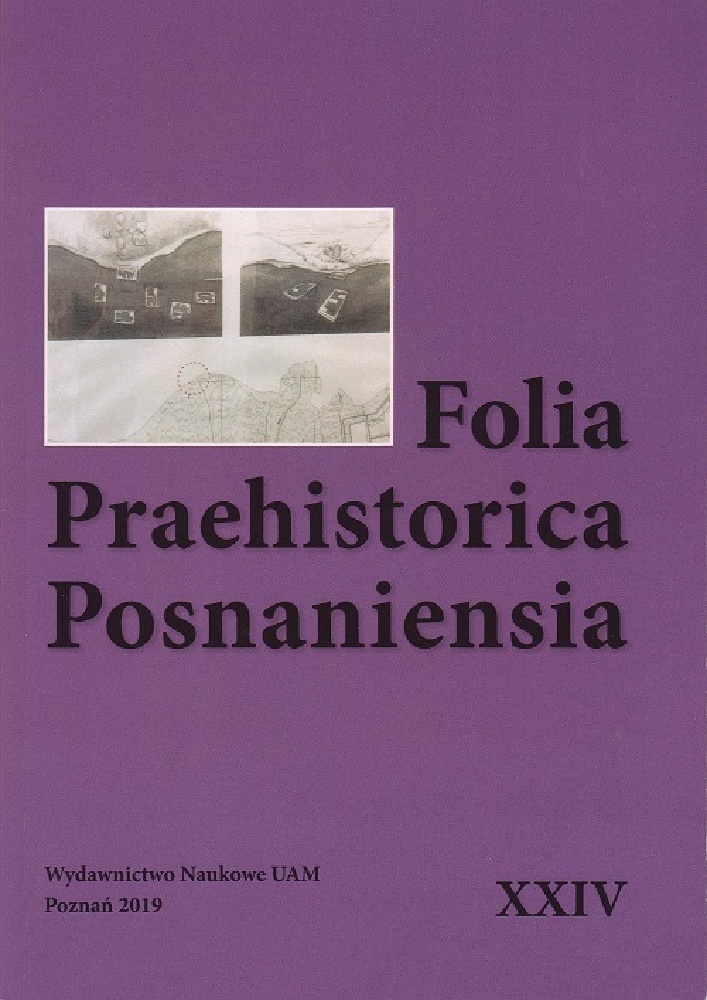Abstract
During the reign of the Amarna spouses, giving gold necklaces to royal officials took place (almost always) from the so-called Window of Appearance. From them, Akhenaten and Nefertiti, often with princesses, honoured deserved and devoted dignitaries. The popularity of the Window of Appearance closely relates to the introduction of a new religious system introduced by Akhenaten and Nefertiti. According to the new religion, Akhenaten and Nefertiti were a pair of divine twins like Shu and Tefnut, who in the Heliopolitan theology, were the children of the god Atum – replaced by Aten in Amarna. The royal couple prayed to the main solar god, while their subjects prayed to the king and queen. Since Akhenaten performed the role of a priest through whom ordinary people could pray to the god, it was necessary to create
a construction that would allow the king to meet with his subjects publicly. The Window of Appearance was such architectural innovation. It was crucial because the king was an intermediator between the people and the only right sun god, Aten. The Windows of Appearance were probably located in various places in Akhetaten, including the Great Palace, the King’s House, the North Palace, the Small Aten Temple and in the temples of the Sunshades of Re in the Kom el-Nana and Maru-Aten. The characteristic shape of the Window of Appearance often appears in the architecture and the art of the Amarna Period. The structure resembles the Axt hieroglyph, which is the morning sun rising between two hills. This symbol is a part of the name of the new capital Axt-itn – The Horizon of Aten.
References
Aldred, C., 1978 Jewels of the Pharaohs: Egyptian Jewelry of the Dynastic Period. New York: Ballantine Books.
Andrews, C., 1994 Amulets of Ancient Egypt. London: British Museum Press.
Borchardt, L., 1913 Das Grabdenkmal des Königs S‘aḥu-Re, vol. 2.2: Die Wandbilder: Abbildungsblätter. Leipzig: Hinrichs.
Bunson, M. R., 2012 Encyclopedia of Ancient Egypt (3rd edition). New York: Facts on File Publications.
De Buck, A., 1955 The Egyptian Coffin Texts. Texts of Spells 76–163, vol. 2. Illinois: The University of Chicago Oriental Institute Publications.
Garis Davies, N. de, 1903 The Rock Tombs of Amarna, vol. 1: The Tomb of Meryra. London: Egypt Exploration Society.
Garis Davies, N. de, 1905 The Rock Tombs of Amarna, vol. 2: The Tombs of Panehesi and Meryra II. London: Egypt Exploration Society.
Garis Davies, N. de, 1905 The Rock Tombs of Amarna, vol. 3: The Tombs of Huya and Ahmes. London: Egypt Exploration Society.
Garis Davies, N. de, 1906 The Rock Tombs of Amarna, vol. 4: The Tombs of Penthu, Mahu and Others. London: Egypt Exploration Society.
Garis Davies, N. de, 1908 The Rock Tombs of Amarna, vol. 5: Smaller Tombs and Boundary Stelae. London: Egypt Exploration Society.
Garis Davies, N. de, 1908 The Rock Tombs of Amarna, vol. 6: The Tombs of Parennefer Tutu and Ay. London: Egypt Exploration Society.
Garis Davies, N. de, 1941 The Tomb of the Vizier Ramose. London: Egypt Exploration Society.
Erichsen, W., 1933 Papyrus Harris I. Hieroglyphische Transkription. Bruxelle: Fondation Égyptologique Reine Élisabeth.
Friedman, F., 1986 Ax in the Amarna Period. Journal of the American Research Center in Egypt, 23, 99–106.
Gardiner, A. H., 1957 Egyptian Grammar. Being an Introduction to the Study of Hieroglyphs. Oxford: Griffith Institute, Ashmolean Museum.
Hanning, R., 1995 Die Sprache der Pharaonen. Großes Handwörterbuch Ägyptisch-Deutsch (2800–950 v. Chr.). Mainz: Philipp von Zabern.
Helck, W., Otto, E., Westendorf, W. (eds), 1977 Lexikon der Ägyptologie II (cols. 731–733). Wiesbaden: Harrassowitz Verlag.
Hölscher, U., 1932 Oriental Institute Communications, No. 15. Excavations at Ancient Thebes 1930/1931. Chicago – Illinois: University of Chicago Press.
Kemp, B. J., 1976 The window of appearance at El-Amarna and the basic structure of this city. Journal of Egyptian Archaeology, 62, 81–99.
Kemp, B. J., 1995 Outlying temples at Amarna. In B. J. Kemp (ed.), Amarna Reports VI (p. 411–462). London: Egypt Exploration Society.
Kemp, B. J., 2013 The city of Akhenaten and Nefertiti: Amarna and its people. London: Thames & Hudson.
Kloska, M. M., 2013 Formy przedstawień boga Atona w sztuce Okresu Amarneńskiego. Medjat – Studia Egiptologiczne, 1, 96–118.
Kruchten, J.-M., 1981 Le Décret d’Horemheb. Traduction, commentaire épigraphique, philologique et institutionnel. Bruxelles: Editions de l’Université de Bruxelles.
Martin, G. T., 1974 The Royal Tomb at El-Amarna, vol. 2: The Reliefs, Inscriptions, and Architecture. London: Egypt Exploration Society.
Pendlebury, J. D. S., 1951 The City of Akhenaten. Part III: The Central City and the Official Quarters. The Excavations at Tell el-Amarna during the seasons 1926–1927 and 1931–1936 [Memoir of the Egypt Exploration Society 44]. London: Egypt Exploration Society.
Pereyra De Fidanza, V., 2000 A queen rewarding a noblewoman in TT49. In K. M. Ciałowicz, J. A. Ostrowski (eds), Les civilisations du bassin Méditerranéen: Hommages à Joachim Śliwa (p. 173–184). Cracovie: Université Jagellonne Press.
Redford, D. B., 1988 The Akhenaten Temple Project, Rwd-Mnw and Inscriptions, vol. 2. Toronto: University of Toronto Press.
Roth, S., 2002 Gebieterin aller Länder: die Rolle der königlichen Frauen in der fiktiven und realen Außenpolitik des ägyptischen Neuen Reiches. Freiburg: Universitätsverlag Freiburg (Orbis Biblicus et Orientalis 185).
Schulman, A. R., 1988 Ceremonial Execution and Public Rewards: Some Historical Scenes on New Kingdom Private Stelae (Phd dissertation). University of Zurich.
The Epigraphic Survey, Department of Antiquities of Egypt, 1980 The Tomb of Kheruef. Theban Tomb 192. Chicago: The Oriental Institute.
Vomberg, P., 2004 Das Erscheinungsfenster innerhalb der amarnazeitlichen Palastarchitektur: Herkunft – Entwicklung – Fortleben (Philippika: Marburger altertumskundliche Abhandlungen 4).
Wiesbaden: Harrassowitz Verlag.
Vomberg, P., 2008 Kult und Architektur. In Ch. Tietze (ed.), Amarna: Lebensräume – Lebensbilder – Weltbilder (p. 64–85). Potsdam: Arcus.
Williamson, J., 2016 Nefertiti sun temple: A new cult complex at Tell el-Amarna, vol. 1. Harvard Egyptological Studies. Leida: Brill.

